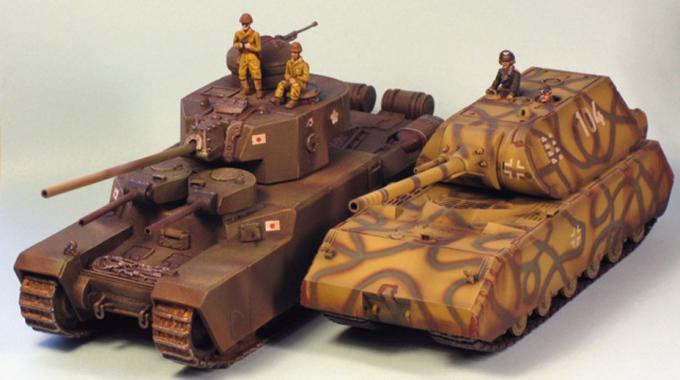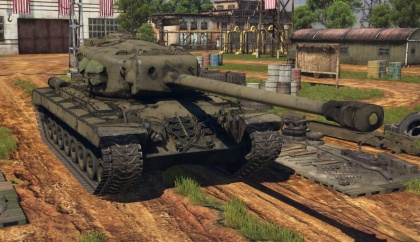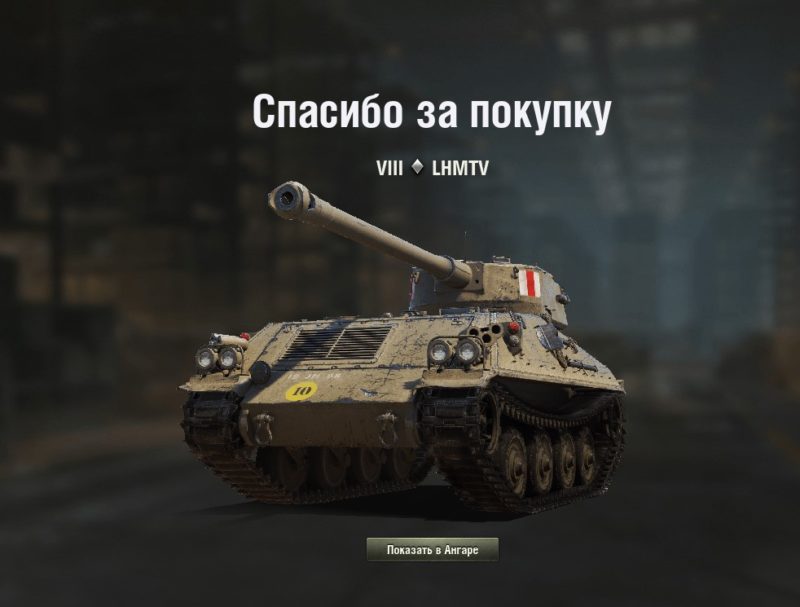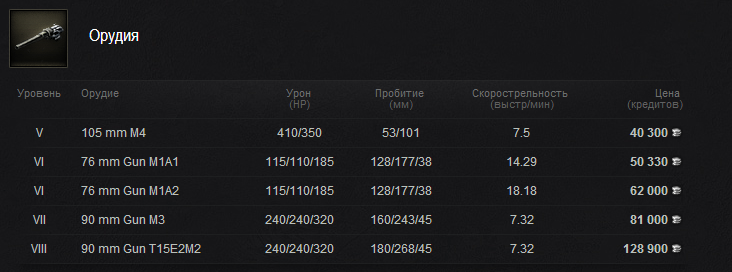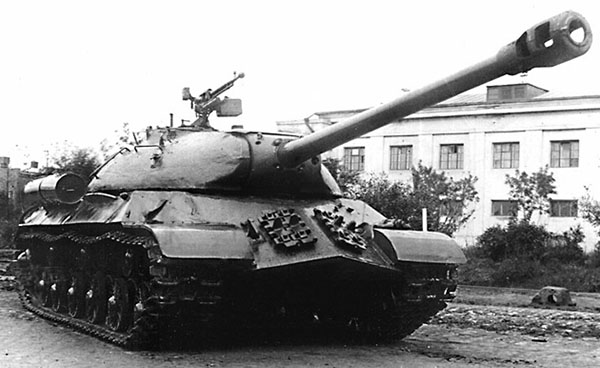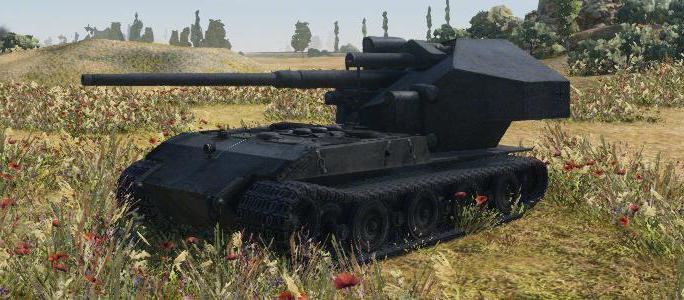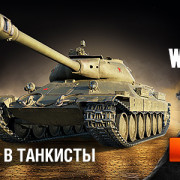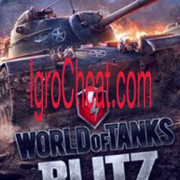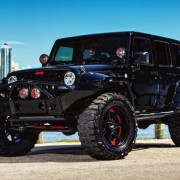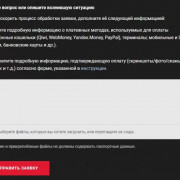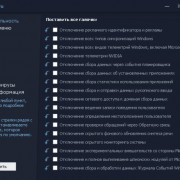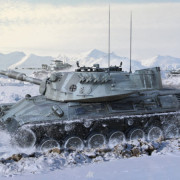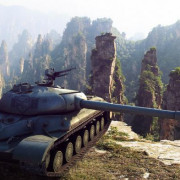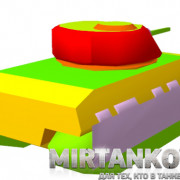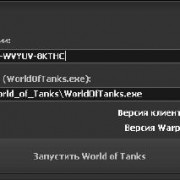Средние танки m3 «генерал ли» и m3 «генерал грант»
Содержание:
Верхняя часть корпуса
Собирается из десятка деталей, на многоразъемную форму пожалели. Склеивал долго, на твердой поверхности, так как низ лежит в одной плоскости. Последний стык оставил в самом незаметном месте, слева от спонсона, хотя состыковалось все хорошо. Возникла другая проблема — верх корпуса оказался на 2 мм шире низа и задней плиты. Получившуюся щель сзади выводил пластиком и шпаклевкой. Также шпаклевка пошла на стык надгусеничных полок и пылевых экранов. Сплошная сетка была сошкурена снизу и заменена травленой. Двери и передний люк были поставлены на рабочие петли, чтобы потом можно было увидеть внутренности.
マップ
英語表記
英語表記ABBEYAIRFIELDBERLINCLIFFEL HALLUFEMPIRE’S BORDERENSKERLENBERGFISHERMAN’S BAYFJORDSGHOST TOWNGLACIERHIGHWAYHIMMELSDORFHINTERLANDKARELIAKHARKOVKLONDIKELAKEVILLELIVE OAKSMALINOVKAMANNERHEIM LINEMINESMINSKMOUNTAIN PASSMUROVANKANEBELBURGOVERLORDPARISPILSENPROKHOROVKAPROVINCEREDSHIRERUINBERGSAND RIVERSERENE COASTSIEGFRIED LINESTEPPESSTUDZIANKITUNDRAWESTFIELDWIDEPARK
削除されたマップDRAGON RIDGEHIDDEN VILLAGEICEBOUNDKOMARINMITTENGARDNORTH WESTPEARL RIVERSACRED VALLEYSEAPORTSEVEROGORSKSOUTH COASTSTALINGRADSWAMPWINDSTORM
日本語表記
日本語表記ウエストフィールドエーレンベルクエル・ハルフエンスクオーヴァーロード崖カレリアクロンダイクゴーストタウン鉱山高速道路後背地山岳路ジークフリート線修道院砂の川ステップストゥジャンキツンドラ帝国境界線ニーベルブルクのどかな海岸パリハリコフ飛行場ヒメルズドルフ氷河ピルゼンフィヨルドプロホロフカプロヴィンスベルリンマリノフカマンネルハイム線湖の村ミンスクムロヴァンカワイドパークライヴオーク漁師の港ルインベルクレッドシャイア
削除されたマップコマリンノースウェスト隠れ里南部海岸港竜の峠セヴェロゴルスク珠江湿地スターリングラード聖なる谷氷結暴風ミッテンガルド
Машина на базе M3[править]
- Канадские танки Ram и Ram II
- Бронетранспортёр Ram Kangaroo
- Артиллерийский тягач Ram Gun Tower
- Огнемётный танк Ram Badger
- САУ M7 Priest — опытный образец был выпущен под названием Т32
- САУ Sexton
- САУ M12
- Подвозчик боеприпасов M30
- опытная САУ T6 (105-мм пушка открыто установлена)
- опытная САУ Т24 (76,2-мм пушка открыто установлена)
- опытная САУ Т36 (40-мм зенитная пушка установлена в башне)
- опытная САУ Т40/М9 (3-х дюймовая зенитная пушка М1918 открыто установлена)
- БРЭМ Т2 (M31), англ. ARVI — выпуск с сентября 1943
- САУ M33 — на базе М31, 155-мм пушка в закрытой рубке
- САУ М44 — дальнейшее развитие М33
- тягач Т16 (опытный образец)
- БРЭМ Grant AVR
- Танк-тральщик T1 Grand Scorpion
- командирская машина Grant OP/Command tank (незначительное количество переоборудовано в эту версию)
- танк обороны канала (прожекторный танк) Shop Tractor T10 (англ. Grant CDL) — 355 шт переоборудовано из М3А1 (май-декабрь 1943), установлен прожектор вместо 37-мм пушки
- огнемётный танк М3Е2 (1942, опытный образец)
- огнемётный танк М3Е5R2 (некоторое количество М3 переделано, установлен огнемёт E5R2)
- экспериментальный танк М3Е1 (ходовая часть и двигатель Ford-GAA)
- экспериментальный танк М3A1Е1 (двигатель Lycoming engine, двойная гидромеханическая трансмиссия)
- экспериментальный танк М3A5Е2 (одинарная гидромеханическая трансмиссия)
- австралийский крейсерский танк AC Sentinel (Часовой), январь 1942 — выпущено 3 опытные машины, всего выпущено 66 шт (в строю до 1956, как учебные).
M3Lee в игре
Иследование и прокачка
Исследование на M2 Medium Tank за 5 250.
- В начале лучше исследовать пушку 75 mm Gun 3 она улучшит перезарядку, урон и бронепробитие.
- Дальше копим на ходовую VVSS T48 для улучшения скорости поворота танка.
- И в конце ставим новый двигатель Chrysler A57, для увеличения мощности двигателя.
Боевая Эфективность
Танк предназначен для помощи партнерам по команде так же по добиванию. Хороший урон 120 ед за выстрел, но лучше держатся близко к укрытию что-бы был отход во время перезарядки.
Достоинства и Недостатки:
- Достоинства:
- хороший урон;
- хорошая передняя броня.
- Недостатки:
- долгая перезарядка;
- нет башни.
Оборудование, снаряжение и боекомплект
Снаряд можно иметь как бронебойный так и подкалиберные, в зависимости от количества кредитов . Модули ставить необязательно, это сильно не изменит стиль игры, но если хотите, ставьте, если хватает кредитов.
Если M3 попадется в бою
Если M3 попался вам в бою, чтож, не самое хорошое, лучше остерегатся его и обходить с борта, благо башни нету у м3.
Если вы один на один с м3.
Желательно крутиться вокруг него, так ему сложно по вам попасть,но если вы на не быстром танке прийдется лоб об лоб и там как повезет.
Если вас двоя а он один.
Тут зависит от класса вашего танка и врага, если вы допустим средний или тяжелый то лезете ему в лоб, надеясь что ваш на парник не рак и поможет вам. Если вы легкий то начинайте каруселить, ваш напарник должен ударить ему по слабому месту и все зависит от его пальцев если они имеются у него.
Combat history
European and Mediterranean Theaters
M3 Lee evaluated after being destroyed in battle
Of the 6,258 M3s produced by the U.S., 2,855 M3s were supplied to the British army, and about 1,368 to the Soviet Union. Consequently, one of the American M3 medium tank’s first actions during the war was in 1942, during the North African Campaign. British Lees and Grants were in action against Rommel’s forces at the disastrous Battle of Gazala on 27 May that year. They continued to serve in North Africa until the end of that campaign. A regiment of M3 Mediums was also used by the U.S. 1st Armored Division in North Africa. In the North African campaign, the M3 was generally appreciated for it’s mechanical reliability, good armor, and heavy firepower.
In all three areas, it outclassed the available British tanks and was able to fight German tanks and towed anti-tank guns. The tall silhouette and low, hull-mounted 75-mm were severe tactical drawbacks, since they prevented the tank from fighting from hull-down firing positions. The use of riveted armor led to a problem called «spalling,» whereby the impact of enemy shells would cause the rivets to break off and become projectiles inside the tank. Later models were welded to eliminate this problem. The M3 was replaced by the M4 Sherman as soon as these were available, though several M3s saw limited action in the battle for Normandy as armored recovery vehicles with dummy guns.
Over 1,300 diesel-engined M3A3 and M3A5s were supplied to the USSR via lend-lease in 1942-1943. All were the Lee variants, although they are sometimes referred to generically as Grants. The M3 was unpopular in the Red Army, where it’s faults were shown up in engagements with enemy armor and anti-tank weapons, with the Soviets bestowing it the nickname of «coffin for seven brothers.» Few were seen in combat after about mid-1943, though some M3s were used on the Arctic Front in the Red Army’s offensive on the Litsa front towards Kirkenes in October 1944. The Germans had, on this front, only a relatively-few obsolete French Hotchkiss tanks that they had acquired during their occupation, consequently the M3’s inferior tank-to-tank capabilities were of limited importance.
Pacific and China-Burma-India Theaters
M3 Lee medium tank, Fort Knox. Maintenance of mechanized equipment.
The Pacific War was an ocean war fought primarily by the naval fleets of the U.S. and the Empire of Japan. Tank warfare would play a secondary role, the primary battles being between warships. Within the Pacific Theater of Operations (PTO), the U.S. Marine Corps deployed all six of it’s tank battalions; the U.S. Army deployed only a third of it’s 70 separate tank battalions, and none of it’s armored divisions, in the Pacific.
During the battle for Tarawa island in 1943, the U.S. Army attacked nearby Makin Island, which was considered a less-,costly operation. The army was supported by a platoon of M3A5 Lee medium tanks from the U.S. Army’s 193rd Tank Battalion, making this battle the only U.S. Army combat use of the M3 in the Pacific Theater. No M3s were supplied to the U.S. Marine Corps.
When the British received their new M4 Shermans from America, it quickly transferred approximately 1,700 M3s to the China-Burma-India (CBI) theater, deploying about 800 M3s to Australian forces and about 900 M3 tanks to Indian forces. British Lees and Grants were used by the British Fourteenth Army from the fall of Rangoon, performing admirably until the end of the war. In the Far East, the M3’s main task was infantry support. It played a pivotal role during the Battle of Imphal, during which the Imperial Japanese Army’s 14th Tank Regiment (consisting of mostly captured British M3 Stuart light tanks and their own Type 95 light tanks) encountered M3 medium tanks for the first time. Despite their lower-than-average off-road performance, the M3s performed well as they traversed the steep hillsides around Imphal.
Declared obsolete in April 1944, the General Lee fought on against Japan until the end of the war. In the end, the M3 in the CBI theater performed the mission it’s original designers had intended it to do: that of supporting the infantry.
Overview
Combat history
European and Mediterranean Theaters
M3 Lee evaluated after being destroyed in battle
Of the 6,258 M3s produced by the U.S., 2,855 M3s were supplied to the British army, and about 1,368 to the Soviet Union. Consequently, one of the American M3 medium tank’s first actions during the war was in 1942, during the North African Campaign. British Lees and Grants were in action against Rommel’s forces at the disastrous Battle of Gazala on 27 May that year. They continued to serve in North Africa until the end of that campaign. A regiment of M3 Mediums was also used by the U.S. 1st Armored Division in North Africa. In the North African campaign, the M3 was generally appreciated for it’s mechanical reliability, good armor, and heavy firepower.
In all three areas, it outclassed the available British tanks and was able to fight German tanks and towed anti-tank guns. The tall silhouette and low, hull-mounted 75-mm were severe tactical drawbacks, since they prevented the tank from fighting from hull-down firing positions. The use of riveted armor led to a problem called «spalling,» whereby the impact of enemy shells would cause the rivets to break off and become projectiles inside the tank. Later models were welded to eliminate this problem. The M3 was replaced by the M4 Sherman as soon as these were available, though several M3s saw limited action in the battle for Normandy as armored recovery vehicles with dummy guns.
Over 1,300 diesel-engined M3A3 and M3A5s were supplied to the USSR via lend-lease in 1942-1943. All were the Lee variants, although they are sometimes referred to generically as Grants. The M3 was unpopular in the Red Army, where it’s faults were shown up in engagements with enemy armor and anti-tank weapons, with the Soviets bestowing it the nickname of «coffin for seven brothers.» Few were seen in combat after about mid-1943, though some M3s were used on the Arctic Front in the Red Army’s offensive on the Litsa front towards Kirkenes in October 1944. The Germans had, on this front, only a relatively-few obsolete French Hotchkiss tanks that they had acquired during their occupation, consequently the M3’s inferior tank-to-tank capabilities were of limited importance.
Pacific and China-Burma-India Theaters
M3 Lee medium tank, Fort Knox. Maintenance of mechanized equipment.
The Pacific War was an ocean war fought primarily by the naval fleets of the U.S. and the Empire of Japan. Tank warfare would play a secondary role, the primary battles being between warships. Within the Pacific Theater of Operations (PTO), the U.S. Marine Corps deployed all six of it’s tank battalions; the U.S. Army deployed only a third of it’s 70 separate tank battalions, and none of it’s armored divisions, in the Pacific.
During the battle for Tarawa island in 1943, the U.S. Army attacked nearby Makin Island, which was considered a less-,costly operation. The army was supported by a platoon of M3A5 Lee medium tanks from the U.S. Army’s 193rd Tank Battalion, making this battle the only U.S. Army combat use of the M3 in the Pacific Theater. No M3s were supplied to the U.S. Marine Corps.
When the British received their new M4 Shermans from America, it quickly transferred approximately 1,700 M3s to the China-Burma-India (CBI) theater, deploying about 800 M3s to Australian forces and about 900 M3 tanks to Indian forces. British Lees and Grants were used by the British Fourteenth Army from the fall of Rangoon, performing admirably until the end of the war. In the Far East, the M3’s main task was infantry support. It played a pivotal role during the Battle of Imphal, during which the Imperial Japanese Army’s 14th Tank Regiment (consisting of mostly captured British M3 Stuart light tanks and their own Type 95 light tanks) encountered M3 medium tanks for the first time. Despite their lower-than-average off-road performance, the M3s performed well as they traversed the steep hillsides around Imphal.
Declared obsolete in April 1944, the General Lee fought on against Japan until the end of the war. In the end, the M3 in the CBI theater performed the mission it’s original designers had intended it to do: that of supporting the infantry.
Overview
スペック(v1.9.0)
車体
| 耐久値 | 475 |
|---|---|
| 車体装甲厚(mm) | 50/38/38 |
| 最高速度(前/後)(km/h) | 38/16 |
| 重量(初期/最終)(t) | 27.87/28.2 |
| 実用出力重量比(hp/t) | 15.6 |
| 砲塔旋回速度(°/s) | 42 |
| 視界範囲(m) | 320 |
| 本体価格(Cr) | 126,000 |
| 修理費(Cr) | |
| 超信地旋回 | 可 |
武装
| 名称 | 発射速度(rpm) | 弾種 | 平均貫通力(mm) | 平均攻撃力 | AP弾DPM | 精度(m) | 照準時間(s) | 総弾数 | 弾薬費(Cr) | 重量(kg) | 俯仰角 |
| 75 mm Gun M2 | 16.67 | APAPCRHE | 9012538 | 110110175 | 1,834 | 0.47 | 1.8 | 75 | 562,80056 | 1,237 | -9°/+20° |
|---|---|---|---|---|---|---|---|---|---|---|---|
| 75 mm Gun M3 | 20 | APAPCRHE | 9212738 | 110110175 | 2,200 | 0.41 | 2.1 | 75 | 562,80056 | 1,437 |
エンジン
| 名称 | 馬力(hp) | 引火確率(%) | 重量(kg) |
| Wright R-975EC2 | 400 | 20 | 515 |
|---|---|---|---|
| Chrysler A57 | 440 | 20 | 570 |
履帯
| 名称 | 積載量(t) | 旋回速度(°/s) | 重量(kg) |
| VVSS T41 | 28.7 | 40 | 5,000 |
|---|---|---|---|
| VVSS T48 | 29.9 | 43 | 5,000 |
無線機
| 名称 | 通信範囲(m) | 重量(kg) |
| SCR 200 | 265 | 40 |
|---|---|---|
| SCR 210 | 325 | 80 |
| SCR 506 | 615 | 110 |
乗員
| 1 | Commander | 2 | Gunner | 3 | Gunner | 4 | Driver | 5 | Radio Operator | 6 | Loader |
|---|
拡張パーツ
| × | Class2 | × | × | Medium Tank | |||||
| Medium | Class1 | × | Vertical Coil Springs 2 Class |
隠蔽性
| 非発砲 | 発砲時 | |
|---|---|---|
| 静止時 | 7.87% | 2.05% |
| 移動時 | 5.87% | 1.53% |
射界
| 射界 | 左15°/右15° |
|---|
開発ツリー
クリックで表示
| 75 mm Gun M2(初期/23,000) | ━ | 75 mm Gun M3(2,100/30,000) | ||
| SCR 200(初期/0) | ━ | SCR 210(330/1,980) | ━ | SCR 506(5,600/33,600) |
| Wright R-975EC2(初期/11,600) | ━ | Chrysler A57(1,500/13,900) | ||
| VVSS T41(初期/1,870) | ━ | VVSS T48(1,095/4,650) |
車両に関する変更履歴
クリックで表示
| v0.9.2 | 見た目の問題を修正 |
| v0.9.3 | HDモデル化衝突モデルを改良 |
| v0.9.4 | 車両モデルの不具合を修正 |
| v0.9.5 | 車両の迷彩の問題を修正 |
| v1.9.0 | 75 mm Gun M2の総弾数を50発から75発に変更75 mm Gun M3の総弾数を50発から75発に変更修理費用を35%ダウン収益性を9%ダウンHPを310から475に変更コレクション車輌に移行 |
Description
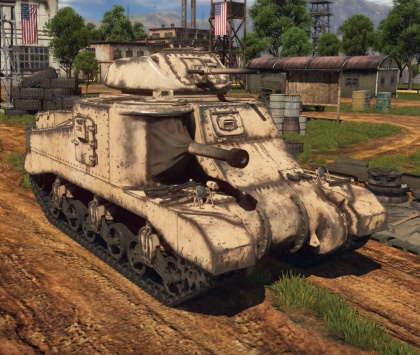
The Grant I is a gift rank II American medium tank
with a battle rating of 2.7 (AB/RB/SB). It was introduced in Update 1.45 «Steel Generals» in the initial batch of US vehicles available at launch. It is a modified version of the M3 Lee in the American medium tree line with a redesigned turret made for the British Army. It is currently available for purchase with Golden Eagles in the American tech tree.
The Grant is most well recognized for its tall profile and two cannons. The suspension resembles that of the M4 Sherman, the only notable difference being the return rollers’ positions. The hull front is also stepped into two plates, where the upper is closer to vertical. The large sponson on the right side carries the main 75 mm gun; note that with 2 crew, it is the operational gun. The 37 mm gun is in a turret, mounted with a leftward offset. Its main notable difference from the M3 Lee is a redesigned turret.
Due to the presence of two cannons, this tank is an excellent multi-role vehicle. The Grant can be played it as a brawler combining the agile 37 mm gun with the high damage of the 75 mm gun, but don’t get too close, in fact, the turreted gun has a bad depression and, combined with the high profile, tends to make close tanks difficult to hit. Note that the different guns can be assigned different keys to be separately used, so it is possible to select the 75 mm as a primary weapon, allowing the optics to accommodate the 75 mm shells (and not from the point of view of the 37mm gun) and use the bullet drop indicator in arcade battles.
General info
Survivability and armour
Armour type:
- Rolled homogeneous armour (Hull, Turret roof)
- Cast homogeneous armour (Turret, Transmission area)
| Armour | Front (Slope angle) | Sides | Rear | Roof |
|---|---|---|---|---|
| Hull | 38.1 mm (54°) Front Glacis 50.8 mm (15-55°) Transmission area 50.8 mm (30°) Driver port 38.1 mm (0-57°) Hull gun mount | 38.1 mm (0-22°) Top 38.1 mm Bottom | 38.1 mm (1-14°) Top 38.1 mm (15-53°) Bottom | 12.7 mm |
| Turret | 76.2 mm (1-57°) Turret front 38.1 mm (1-69°) Gun mantlet | 50.8 mm (7-45°) | 50.8 mm (1-35°) | 38.1 mm |
| Armour | Sides | Roof | ||
| Cupola | 50.8 mm | 38.1 mm |
Notes:
- Suspension wheels are 15 mm thick, bogies are 10 mm thick, and tracks are 20 mm thick.
- Hull doors and vision ports are 38.1 mm thick.
- Turret ring is 50.8 mm thick.
Mobility
| Game Mode | Max Speed (km/h) | Weight (tons) | Engine power (horsepower) | Power-to-weight ratio (hp/ton) | |||
|---|---|---|---|---|---|---|---|
| Forward | Reverse | Stock | Upgraded | Stock | Upgraded | ||
| Arcade | 42 | 5 | 27.9 | 620 | 763 | 22.22 | 27.35 |
| Realistic | 38 | 5 | 354 | 400 | 12.69 | 14.34 |
Ссылки
- Ресурсы World of Tanks Blitz
- https://wotblitz.ru/encyclopedia/vehicles/usa/M3_Grant/
- https://forum.wotblitz.ru/
- https://wiki.wargaming.net/ru/M3_Lee
- В сети Интернет
https://ru.wikipedia.org/w/index.php?title=%D0%9B%D0%B8_%28%D1%82%D0%B0%D0%BD%D0%BA%29
Техника США
| Лёгкие танки | I T1 Cunningham • II T1E6 • II T2 Light Tank • II T7 Combat Car • III M22 Locust |
| Средние танки | II T2 Medium Tank • III M2 Medium Tank • IV M3 Lee • V M4A2E4 Sherman • V M4A1 Sherman • V Ram II • VI M4A3E8 Fury • VI M4A3E8 Sherman • VI M4A3E2 Sherman Jumbo • VII T20 • VIII M26 Pershing • VIII T26E4 SuperPershing • IX M46 Patton • X M48A1 |
| Тяжёлые танки | V T14 • V T1 Heavy Tank • VI M6 • VII T29 • VIII T32 • VIII T34 • VIII T34_hvy_Freedom • IX M103 • X T110E5 |
| ПТ-САУ | II T18 • III T82 • IV M8A1 • IV T40 • V M10 Wolverine • V T49 • VI M18 Hellcat • VI M36 Jackson • VII T25/2 • VII T25 AT • VIII T28 • VIII T28 Prototype • IX T30 • IX T95 • X T110E3 • X T110E4 |
Средние танки
| Техника СССР | IV А-32 • IV Т-28 • V Матильда IV • V Т-34 • VI Т-34-85 • VI T-34-85_Victory • VII КВ-13 • VII T-34-85_Rudy • VII Т-43 • VIII Т-44 • IX Т-54 • X Объект 140 • X Т-62А |
| Техника Германии | III Pz.Kpfw. IV Ausf. A • III Pz.Kpfw. S35 739 (f) • IV PzIII • IV Pz.Kpfw. IV Ausf. D • V Pz.Kpfw. III/IV • V Pz.Kpfw. IV • V Pz.Kpfw. IV hydrostat. • V Pz.Kpfw. V/IV • V Pz.Kpfw. T 25 • VI Pz.Kpfw. IV Schmalturm • VI VK 30.01 (P) • VI VK 30.01 (D) • VI VK 30.02 (M) • VII Panther/M10 • VII Panther • VII VK 30.02 (D) • VIII Indien-Panzer • VIII Panther II • IX E 50 • IX Leopard Prototyp A • X E 50 Ausf. M • X Leopard 1 |
| Техника США | II T2 Medium Tank • III M2 Medium Tank • IV M3 Lee • V M4A2E4 Sherman • V M4A1 Sherman • V Ram II • VI M4A3E8 Fury • VI M4A3E8 Sherman • VI M4A3E2 Sherman Jumbo • VII T20 • VIII M26 Pershing • VIII T26E4 SuperPershing • IX M46 Patton • X M48A1 |
| Техника Великобритании | I Vickers Medium Mk. I • II Vickers Medium Mk. II • III Vickers Medium Mk. III • IV Matilda • IV Sentinel_AC1 • V Matilda Black Prince • VI Cromwell • VII Comet • VIII Centurion Mk. I • IX Centurion Mk. 7/1 • X FV4202 |
| Техника Китая | VIII Type 59 |
| Техника Японии | II Chi-Ni • III Type 97 Chi-Ha • IV Type 1 Chi-He • V Type 3 Chi-Nu • V Type 3 Chi-Nu Kai • V J12_Shinobi • V Pz.Kpfw. IV Ausf. H • VI Type 4 Chi-To • VII Type 5 Chi-Ri • VIII STA-1 • IX Type 61 • X STB-1 |
Другое
Поддержка — за хорошую скорость и урон, которым можно сбить захват базы.
Историческая справка
M3 «Ли» (англ. M3 Lee) — американский средний танк периода Второй мировой войны. Был назван в честь генерала Гражданской войны в США Р. Э. Ли. Также широко известен под названием его модификации для британских войск M3 «Грант» (англ. M3 Grant), названной в честь президента США У. С. Гранта. От советских танкистов получил прозвище «БМ-6 (братская могила на шестерых)».
M3 был создан в 1940 году на основе неудачного танка M2 и производился серийно с июня 1941 по декабрь 1942 года. Всего в различных вариантах было выпущено 6258 M3. Около 2/3 выпущенных M3 были переданы другим странам, почти исключительно Великобритании и СССР, по программе ленд-лиза. Кроме того, до появления в достаточных количествах более совершенного среднего танка M4 «Шерман» M3 был основным средним танком США.
Production from the M3A1 to the M3A5
Ready as it was for mass-production, 4724 units M3s were built in the first batch, starting from mid-1941, and the second batch of 1334 units was built until December 1942, encompassing the M3A1 to the M3A5 versions. The M3A1 (Lee II) featured a cast rounded hull, with a low profile turret and slightly thicker armor. Only 300 M3A1s were built, followed by the M3A2 (Lee III), with a welded but sharp angled hull, of which only 12 units were produced. The M3A3 (also called Lee IV and V), featured a welded hull, a pair of GM 6-71 diesels, and fixed or eliminated side doors (322 units).
The M3A4 (Lee VI) had a stretched welded hull and a new Chrysler A57 multibank engine, a strange assembly of five 6-cyl L-head car engines mated to a common crankshaft, boasting a final 21 liters capacity with 470 bhp and a lot of torque. This was well-appreciated, as the initial model was criticized for being under-powered. Only 109 of these M3A4 were built. The last production (591 units), mostly fielded by the British army, was the M3A5, equipped with the twin GM 6-71 diesels, but with a riveted hull and Lee turret. Strangely, they were called “Grant II” in British service. Due to the many contractors involved, notably the cast turret foundries, these variants showed further variety in the shape of the hull, turret and details, notably due to different casting procedures.
Usage in battles
The multiple cannons allow for different combinations of attack. The 75 mm gun possesses armour penetration on about the level of the 37mm gun; however, the damage upon penetration is extremely high with the M61 APCBC shell due to the HE filler. On the other hand, the 37mm gun allows for close quarters and longer-range fighting, where its high-velocity and effective shell make for good long range targeting while it is also the only cannon on the Grant that has a full 360-degree traverse.
Different guns mean different styles of play. The Grant can be played as a tank destroyer, using its sponson gun to take shots at medium range and its 37mm to cover the flanks and make longer range snipe shots. The Grant can also be used as an assault tank, quickly advancing on points while switching between the powerful 75mm gun and the faster-firing 37mm. In all game modes, the two gun profiles should be assigned to different keys, this will allow players to aim using the sights of the three guns separately, allowing the usage of the individual optics to actually hit things at range.
Being at BR 2.7, the Grant I has the possibility of facing long-barrelled Pz.Kpfw. III, and Pz.Kpfw. IV, as well as T-34s. The ZiS-30 and Na-To are also very deadly, as its guns are competitive even at 5.7. The 75 mm gun can reliable penetrate all of these tanks at short range (save the T-34), whereas the 37 mm will require some particular shot placement.
Modules
| Tier | Mobility | Protection | Firepower | ||
|---|---|---|---|---|---|
| I | Tracks | Parts | Horizontal Drive | M51B1/B2 | |
| II | Suspension | Brake System | FPE | Adjustment of Fire | M61 shot |
| III | Filters | Crew Replenishment | Elevation Mechanism | ||
| IV | Transmission | Engine | Smoke grenade | Artillery Support | M89 |
| This is a premium vehicle: all modifications are unlocked on purchase |
Pros and cons
Pros:
- Ability to use two guns: a 37 mm and a 75 mm — which is very powerful at this rank
- Fine frontal armour
- Side mounted 75 mm gives the ability for some unique tactics
- Despite the tall profile, the «wedding cake» design of the turret has thick sloped armour, providing extra protection to make up for its height
Cons:
- Tall profile, big target
- Fixed 75 mm gun in the sponson makes it harder to use as a primary
- Slow traverse speeds make it easy for a light or a particularly speedy medium tank to sneak around the sides
Armaments
Main armament
Main article: M5 (37 mm)
| 37 mm M5 | |||||
|---|---|---|---|---|---|
| Capacity | Vertical guidance | Horizontal guidance | Stabilizer | ||
| 179 | -7°/+60° | ±180° | Vertical | ||
| Turret rotation speed (°/s) | |||||
| Mode | Stock | Upgraded | Prior + Full crew | Prior + Expert qualif. | Prior + Ace qualif. |
| Arcade | 10.70 | 14.80 | 18.00 | 19.90 | 21.20 |
| Realistic | 10.70 | 12.60 | 15.30 | 16.92 | 18.0 |
| Reloading rate (seconds) | |||||
| Stock | Prior + Full crew | Prior + Expert qualif. | Prior + Ace qualif. | ||
| 3.77 | 3.33 | 3.07 | 2.90 |
Ammunition
| Penetration statistics | |||||||
|---|---|---|---|---|---|---|---|
| Ammunition | Type of warhead | Penetration in mm @ 90° | |||||
| 10m | 100m | 500m | 1000m | 1500m | 2000m | ||
| M74B1 | AP | 78 | 76 | 65 | 54 | 44 | 37 |
| M51B1/B2 | APC | 78 | 76 | 65 | 54 | 44 | 37 |
| Shell details | ||||||||||
|---|---|---|---|---|---|---|---|---|---|---|
| Ammunition | Type of warhead | Velocity in m/s | ProjectileMass in kg | Fuse delay
in m: |
Fuse sensitivity
in mm: |
Explosive Mass in g (TNT equivalent): | Normalization At 30° from horizontal: | Ricochet: | ||
| 0% | 50% | 100% | ||||||||
| M74B1 | AP | 883 | 0.87 | N/A | N/A | N/A | -1° | 47° | 60° | 65° |
| M51B1/B2 | APC | 883 | 0.87 | N/A | N/A | N/A | +4° | 48° | 63° | 71° |
Ammo racks
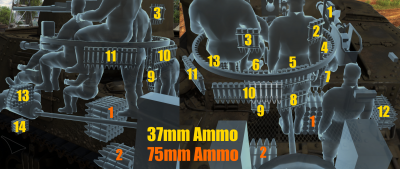
Ammo racks of the M3 Lee.
| Fullammo | 1strack empty | 2ndrack empty | 3rdrack empty | 4thrack empty | 5thrack empty | 6thrack empty | 7thrack empty | 8thrack empty | 9thrack empty | 10thrack empty | 11thrack empty | 12thrack empty | 13thrack empty | 14thrack empty | Visualdiscrepancy |
|---|---|---|---|---|---|---|---|---|---|---|---|---|---|---|---|
| 179 | 176 (+3) | 172 (+7) | 168 (+11) | 160 (+19) | 153 (+26) | 148 (+31) | 140 (+39) | 133 (+46) | 129 (+50) | 116 (+63) | 105 (+50) | 63 (+116) | 21 (+158) | 1 (+178) | Yes |
Additional armament
Main article: M2 (75 mm)
| 75 mm M2 | |||
|---|---|---|---|
| Hull mount | |||
| Capacity | Vertical guidance | Horizontal guidance | Stabilizer |
| 50 | -9°/+20° | ±15° | Vertical |
| Reloading rate (seconds) | |||
| Stock | Prior + Full crew | Prior + Expert Qualif. | Prior + Ace Qualif. |
| 6.50 | 5.75 | 5.30 | 5.00 |
Ammunition
| Penetration statistics | |||||||
|---|---|---|---|---|---|---|---|
| Ammunition | Type of warhead | Penetration in mm @ 90° | |||||
| 10m | 100m | 500m | 1000m | 1500m | 2000m | ||
| M72 shot | AP | 84 | 82 | 73 | 62 | 53 | 46 |
| M48 shell | HE | 10 | 10 | 10 | 10 | 10 | 10 |
| M62 shot | APCBC | 96 | 94 | 84 | 73 | 63 | 55 |
| Shell details | ||||||||||
|---|---|---|---|---|---|---|---|---|---|---|
| Ammunition | Type of warhead | Velocity in m/s | ProjectileMass in kg | Fuse delay
in m: |
Fuse sensitivity
in mm: |
Explosive Mass in g (TNT equivalent): | Normalization At 30° from horizontal: | Ricochet: | ||
| 0% | 50% | 100% | ||||||||
| M72 shot | AP | 588 | 6.3 | N/A | N/A | N/A | -1° | 47° | 60° | 65° |
| M48 shell | HE | 448 | 6.3 | 0.4 | 0.5 | 666 | +0° | 79° | 80° | 81° |
| M62 shot | APCBC | 588 | 6.8 | 1.2 | 20 | 63.7 | +4° | 48° | 63° | 71° |
| Smoke characteristic | ||||||
|---|---|---|---|---|---|---|
| Ammunition | Velocity in m/s | ProjectileMass in kg | Screen radius in m | Screen time in s | Screen hold time in s: | Explosive Mass in g (TNT equivalent): |
| M89 | 259 | 3 | 13 | 5 | 20 | 50 |
Ammo racks
| Fullammo | 1strack empty | 2ndrack empty | Visualdiscrepancy |
|---|---|---|---|
| 50 | 10 (+40) | 1 (+49) | No |
| 7.62 mm M1919A4 | |||
|---|---|---|---|
| Commander cupola mount | |||
| Capacity (Belt capacity) | Fire rate (shots/minute) | Vertical guidance | Horizontal guidance |
| 3,000 (250) | 500 | -10°/+60° | ±180° |
| Coaxial mount | |||
| Capacity (Belt capacity) | Fire rate (shots/minute) | Vertical guidance | Horizontal guidance |
| 3,000 (250) | 500 | N/A | N/A |
史実
格納

1939年に制式化され量産が開始されたM2中戦車だったが、1940年5月の対仏戦争で使用されたドイツ軍の戦車は37mm砲や50mm砲を装備する3号戦車や75mm砲を装備する4号戦車であり、M2中戦車の劣勢は明らかであった。
そのため75mm砲を全周周回する砲塔に搭載する戦車の開発が開始されたが、そのような大口径砲を砲塔に搭載する経験が不足していたことから、取り急ぎの急造車両として、M2中戦車をベースとした車体に75mm砲を限定旋回式で搭載する車両の開発が1940年8月よりロック・アイランド工廠で開始された。これがM3中戦車である。
M3中戦車の基本構造は前身であるM2A1中戦車とほぼ同じである。
その主砲は車体右側に装備された75mm砲で、当初は主に対歩兵・陣地を想定した、フランス製野砲ベースの砲身長が短い75mm Gun M2を搭載していたが、後期生産型では砲身を延長し、対戦車能力を向上させた75mm Gun M3を搭載するようになった。
また、主砲が限定旋回式であり、対戦車能力が低いことを考慮し、車体上部には小型の全周周回砲塔を装備し、37mm Gun M-5またはM-6を搭載、さらにその砲塔上部には機銃付きの車長用キューポラが付いていた。
また量産途中からはM3軽戦車と同様、各砲にジャイロ・スタビライザー(縦方向砲安定装置)が搭載されるようになった。
しかし縦方向のみを安定させるため走行中には射撃できず、信頼性も低かったため機能を切る乗員も多かったようである。
装甲厚は最大約50mmで、当時の戦車としては十分な厚さを確保していた。
サスペンションについてはVVSSを採用していたが、後にバネの可動範囲を増やした改良型が装備された。
エンジンは初期にはWright Continental R-975EC2を搭載していた(M3、M3A1、M3A2)が、その後Chrysler A57(M3A4)やGM製エンジン(M3A3、M3A5)を搭載する車両も生産された。
また車体についても、上部構造をそれぞれリベット(M3、M3A5)、溶接(M3A2、M3A3)、鋳造(M3A1)とする3種類が各地の工場で生産された。
このようにM3中戦車は様々なバリエーションが同時並行的に生産された。
これは大規模な量産を行うに当たり、各工場が得意とする技術によって部品生産を行ったためであるが、戦前より品質管理を徹底してきたアメリカでは、例え生産を様々な工場に分散させたとしても、統一的な規格・精度を有する部品が集まることを期待できたのである。
もともとM2中戦車向けに計画されていた大規模生産施設を振り向け、M3中戦車の生産はフルスケールで行われた。
1941年3月に開発が終了し、4月に試作車が完成すると同月には量産が開始され、1942年12月までに改良が繰り返されながら各型合わせて6258両が生産された。
そのうち後述するイギリスとソ連にそれぞれ約2500両、1500両が供与されている。
アメリカにおいてはM4中戦車が登場するまでの戦力として配備され、チュニジアをめぐる戦いで初めて使用されたが、乗員の練度不足もあってドイツ軍相手に大きな損害を出した。
その後はイタリア本土での作戦にも使用されたが、M4中戦車の配備が進んだこともあり、1943年には第一線を退いた。
太平洋戦線ではギルバート諸島の戦いで使用された。
M3中戦車は、北アフリカでドイツと戦うイギリスにもレンドリースとして供与された。
イギリス向けとして車長用キューポラを廃し、無線機を搭載するため後方に膨らんだ砲塔を持つ車両が開発されたが、急を告げる戦局のため、アメリカ軍と同じ仕様の車両も供与された。
イギリス軍では南北戦争の将軍から取って、前者に「グラント(wotでもGrantが実装されている」、後者に「リー(本車)」というあだ名を付けた。 M3中戦車は高い信頼性と榴弾・徹甲弾両方を発射可能な75mm砲が好評だったが、車高が高い多砲塔戦車であることからくる運用上の問題も存在した。
その後はM4中戦車の配備に伴い、43年から第一線を退いていったが、ビルマ方面では引き続き使用され、またオーストラリア軍にも配備されて、有効な対戦車火器が少ない日本軍と戦火を交えた。
またソ連にもレンドリースで供与されたが、T-34などと比較して全般に低性能で、「七人乗りの棺桶」と乗員に揶揄されることになった。
M3中戦車のバリエーションとしては、M7 Priest、M12などが挙げられるほか、カナダはM3中戦車をベースとしてRAM巡航戦車を開発した。
General info
Survivability and armour
Armour type:
- Rolled homogeneous armour (Hull, Turret roof)
- Cast homogeneous armour (Turret, Transmission area)
| Armour | Front (Slope angle) | Sides | Rear | Roof |
|---|---|---|---|---|
| Hull | 38.1 mm (54°) Front Glacis 50.8 mm (15-55°) Transmission area 50.8 mm (29°) Driver port 38.1 mm (0-57°) Hull gun mount | 38.1 mm (0-22°) Top 38.1 mm Bottom | 38.1 mm (1-14°) Top 38.1 mm (15-53°) Bottom | 12.7 mm |
| Turret | 50.8 mm (11-65°) Turret front 38.1 mm (1-82°) Gun mantlet | 50.8 mm (0-66°) | 50.8 mm (1-54°) | 22.2 mm |
| Armour | Front | Sides | Roof | |
| Cupola | 50.8 mm | 50.8 mm | 50.8 mm |
Notes:
- Suspension wheels are 15 mm thick, bogies are 10 mm thick, and tracks are 17 mm thick.
- Hull doors and vision ports are 38.1 mm thick.
When combating this tank, avoid its 75 mm gun by flanking the vehicle, then get in close and hug the sides or rear of the vehicle to prevent them from turning and going under the 37 mm’s depression range. Aim for the large superstructure, a solid penetration will knock out all 6 crew members or make the ammunition combust. Note that firing through the side hatch will usually destroy the tank in a single shot, owing to the lack of sloping and ammunition storage.
Mobility
| Game Mode | Max Speed (km/h) | Weight (tons) | Engine power (horsepower) | Power-to-weight ratio (hp/ton) | |||
|---|---|---|---|---|---|---|---|
| Forward | Reverse | Stock | Upgraded | Stock | Upgraded | ||
| Arcade | 42 | 5 | 27.7 | 620 | 763 | 22.38 | 27.55 |
| Realistic | 38 | 5 | 354 | 400 | 12.78 | 14.44 |
